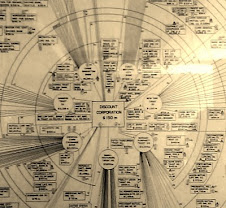“a
really extraordinary thing happened: a horse gave birth to a hare. Xerxes
dismissed it as insignificant, though its meaning was transparent. It meant
that, although Xerxes would walk tall and proud on his way to attack Greece, he
would return to his starting-point running for his life” Herodotus 452 BCE
This morning’s USA Today featured the
headline, “Is a market crash coming?”. In
it, Yale Economist Robert Shiller, Euro Pacific Capital’s Peter Schiff, and
Artemis Capital’s Christopher Cole opined on the U.S. Stock market and its
pre-2008, pre-2000, pre-1929 similarities.
These three men were featured for their prognostications and performance
leading up to and during the 2008 market collapse. Whether they didn’t talk about it or whether
the article’s author Adam Shell didn’t ask or report it, there was a glaring
arithmetic omission in the piece.
Over the past 20 years, U.S. and European
companies have engaged in the longest period of share buy-backs and internally
financed merger and acquisition (M&A) activity wiping out nearly $5.5
trillion in investable securities based on U.S. Federal Reserve data. Over the same period, the number of publicly
traded companies has nearly halved. And
while off their 2012 peak, the Reserve Bank of St. Louis reports that corporate
earnings as a fraction of U.S. GDP is still at 40-year highs. Venture capital investments – investments that
can only be made by qualified, elite investors, has nearly doubled in the past
10 years though the number of funded transactions is in only half the companies
that were financed during 1999 and 2000.
There’s no question that the central bank intervention on interest rates
has fueled the massive corporate share repurchasing activities and that rising
capital balances among the ultra-wealthy have migrated into the exclusive
unicorn VC clubs.
In short, each share that exists in the market
today has a higher price premium on it for the simple reason that the supply is
not meeting the demand.
Unlike 1929 (human speculators), 2000 (fad
speculators), and 2008 (asset speculators), there are a few other market phenomena
that miss the attention of the experts and the article.
First, actuarial tables! This is the most damaging reality facing the
largest number of investors that is never discussed. While the central bank intervention following
2008 was like shooting atropine into a heart in crisis, an insidious problem
was created. Fiduciaries who are
required to purchase and hold investment-grade debt (pensions, insurers, banks,
mutual funds, endowments, even Social Security) saw their yields decrease below
the compounding level required to meet their future obligations. This meant that they needed to “catch up”
their returns in other (riskier) investments without alarming the public. Corporations, using cheap fiat money, issued
record amounts of investment grade debt essentially playing the spread between sovereign
debt and corporate risk. In the first
quarter of 2017, a record $372 billion in new corporate bonds were issued. When entities that take today’s money with a
promise to repay value in the future (think pensions, life insurers, Social
Security, and mutual funds), they rely on compounding rates of return on the
money they hold. With nearly 9 years of
interest rate manipulation, these parties no longer can meet their obligations
in the future without buying much higher risk assets (public and private
equity). And for their math to work,
guess what? They must have equity
markets appreciate in value at a rate in excess of ”fair value” as they’re
making up in equities what they’ve lost in compounding returns in debt.
Second, reinvestment risk. This is a high-class problem that’s getting
worse, not better. When any investor
elects to leave one form of investment, one of the greatest challenges is to
move all the money to other investments that achieve equal or better returns. With record amounts of passive investments in
public equities (mutual funds, ETFs and other Index strategies), the ability to
sell equities and move the money into anything else has become unwieldy at best
and impossible for many asset managers.
Let’s say you don’t like the valuation of a company and its stock. Great!
What are you going to do with the money that you take out? And if you’re a large holder of said stock,
how are you going to exit without drastically dropping the price with a glut of
supply? Oh, that’s right, you’re
not. On the one hand, you’ve got no
place to go with the volume of capital that you’d get from the sale and on the
other, you’ve got no way to exit without devaluing the thing you’re
selling. So, caught between a rock and a
hard place (or using, our opening metaphors, facing the Greeks at Thermopylae)
you just have to hold your breath and hope that King Leonidas caves first. Put in modern market terms, you have to hope
that everyone else is equally obligated to keep prices rising so that the
mutual assured destruction button doesn’t get pressed.
Like Xerxes and the Persian Army, today’s
market oracles are missing the lessons of the Athenian States. Overwhelming force (whether its soldiers or
hordes of cash) is irrelevant when the Hot Gates are narrow. With little option to purchase assets with
returns and with less inventory to fill the gaps that interest rate
manipulation has created on future liabilities, the market is stuck with odds
that are worse than Xerxes. If anyone
creates the “correction” the whole Achaemenid empire falls. Every manager knows this, every central
banker knows this, and they’ve all seen the movie 300. Nobody wants to take on King Leonidas so the
rhinos are getting dressed as bulls.
Untangle this last metaphor and you’ll get extra points!
x





.jpg)



